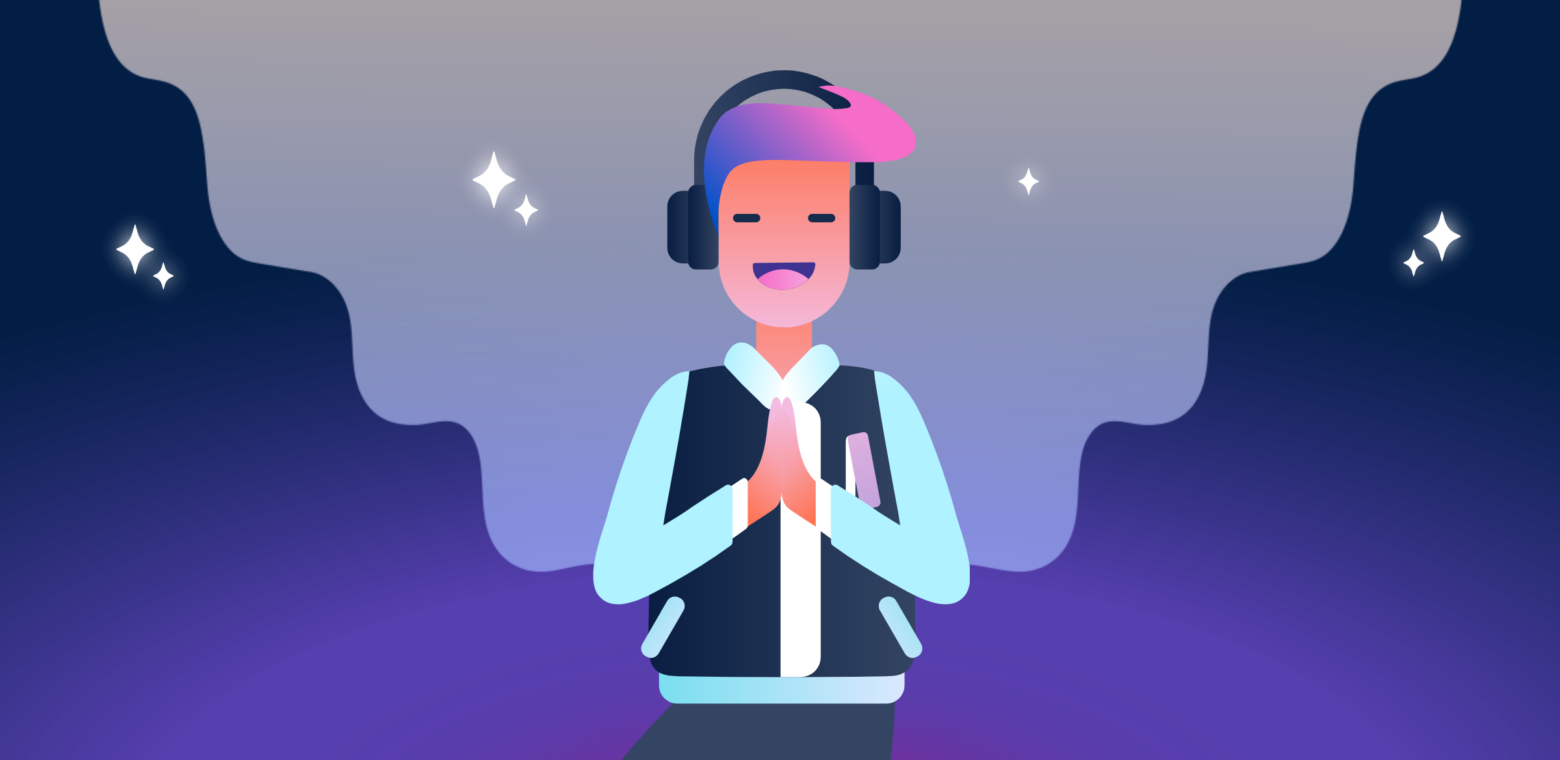When you hear the term “get some rest,” what’s the first thing that comes to mind? Chances are, it has something to do with sleep.
But if you’ve ever had the experience of waking up after a full eight hours feeling just as exhausted as you were when your head hit the pillow, you know that sleep doesn’t always make you feel fully rested.
While sleep is a great way to get physical rest, it isn’t the only type of rest you need. And if you’re in need of a different type, you can get all the sleep in the world—and you still won’t feel refreshed and recharged.
“We have, for the most part, lumped rest over to this one category, [which is physical rest],” says Dr. Saundra Dalton-Smith, TedX speaker and author of Sacred Rest: Recover Your Life, Renew Your Energy, Restore Your Sanity. “We don’t really understand that there are multiple types of rest.”
“You’re attempting to get something—[better rest]—that doesn’t fully look at the different aspects of it and the different ways that you can accomplish it,” continues Dalton-Smith. “And so what happens is, people tend to excel at getting certain types of rest—and then are completely omitting other types of rest, simply because they don’t know they exist.”

According to Dalton, there are actually seven (!!) types of rest every person needs. The question is: what are the seven different types of rest? How can you determine what type of rest you need? And, most importantly, how can you prioritize that rest so that you can be your happiest, most productive self?
What Are The 7 Types Of Rest?
As mentioned, there are different types of rest you need to feel your best—seven, in fact. The different types of rest include:
- Physical: Physical rest is about resting your body. In addition to sleep, physical rest can include anything that restores your body, like getting a massage or attending a yoga class.
- Mental: Mental rest is about giving your brain a break. People need mental rest when they’re overwhelmed and struggle to shut off their thoughts. Mental rest might include things like stepping away from a busy work day to take a walk or, as Dalton-Smith recommends, jotting down any nagging or racing thoughts that keep you awake in a journal before going to sleep.
- Emotional: Emotional rest is about being authentic and honest with your feelings. People need emotional rest when they get stuck in people-pleasing (saying yes to a commitment, even though they want to say no) or feel like they have to project a certain image (responding with “I’m great!” when someone asks how they’re doing—even though they’re actually struggling).
- Social: Social rest is about pursuing positive, energizing, and supportive social connections, or simply taking a break from socialization altogether. People often need social rest when their relationships leave them feeling drained and exhausted.
- Sensory: Sensory rest is about giving your senses a break. People need sensory rest when they overwhelm their senses with constant stimuli—for example, spending the entire day glued to computer, phone, and TV screens.
- Creative: Creative rest is about exposing yourself to artistic, nature-based, and innovative environments, without feeling the need to produce a creation—and feeling the sense of inspiration that comes along with them. People need creative rest when they feel stuck, uninspired, and unable to develop new ideas or solutions to problems.
- Spiritual: Spiritual rest is about connecting with something larger than yourself. People need spiritual rest when they find themselves so caught up in their issues that they can’t see or connect with the bigger picture.
Paying attention to rest deficits is a critical part of productivity. If you’re exhausted, you can’t do your best work—and if you’re not getting the right type of rest, you’re not going to be able to get past that exhaustion.
“Most of us are producing from a place of exhaustion,” says Dalton-Smith. “So we’re getting work done, but is it our best work? Is it our highest quality work? Is it our most beneficial work? Or is it just work that we are able to grind out of our depletion? Because that’s what we’re seeing… we have a lot of people who are producing but they’re producing from a place of burnout.”
Getting the right type of rest is a must if you want to be happy, healthy, and productive. But how can you figure out which deficit you’re experiencing?
How To Determine What Type Of Rest You Need…
Determining what type of rest you need “starts with evaluating where you’re using energy throughout your day,” says Dalton-Smith.
The areas where you expend the most energy are likely going to be the areas where you need to prioritize rest. For example, if you’re a graphic designer and spend most of your time creating new designs, you’re using a lot of creative energy throughout the day—and, as such, will need to prioritize creative rest. If you’re in the middle of training for a marathon and are running 15 miles every day, your body is going to be exhausted—and you’ll need to get plenty of physical rest to recover.
“When you start looking at all of these different ways you use energy in the day, start thinking about ‘where are you pouring out the most?,’” says Dalton-Smith. “Because the area that you’re pouring out the most, if you’re not actively doing something to restore and to recover what you’ve poured out, that’s the place that can become [rest] deficient.”
If you want to determine what type of rest you need, start by taking an inventory of how you’re spending your time. What kind of tasks take up the majority of your day? Which resources are you using to accomplish those tasks? What are the things that require the most energy—and/or leave you the most exhausted?
Now, chances are, you’re using all seven types of energy on a regular basis. But identifying which areas you use the most—and where you feel the most depleted—will give you a good idea of what type of rest you need to prioritize. If you’re not sure what type of rest you need, Dalton-Smith and her team developed a quiz to help you identify the areas where you’re in a rest deficit.
“We’re all using all seven [types of energy] at some points throughout our day and in our life,” says Dalton-Smith. “But there’s usually one or two [areas] that are higher than the others and those areas of highest deficit, what are going to make you feel the most tired, the most exhausted.”
…And How To Actually Get That Rest
Once you’ve determined which type of rest you need, it’s time to actually get that rest—which, for many people, can be easier said than done.
Here are a few strategies to help you get the rest you need to be your happiest, healthiest, and most productive self:
Tackle Your Most Impactful Rest Deficit First
As mentioned, most people use all seven types of energy throughout their day—which means that you may have a rest deficit in more than one area.
In order for your rest routine to deliver the most bang for your buck, you need to prioritize the areas where the rest deficit has the most impact.
For example, let’s say you’re experiencing physical and emotional rest deficits. Your first instinct might be to focus on getting more physical rest. But if your racing thoughts are making it impossible to fall asleep at night, prioritizing emotional rest will enable you to slow down your thoughts and feel more peaceful and calm. In turn, this will make it easier to fall asleep and get the physical rest you need to feel your best.

If you’re experiencing multiple rest deficits, try to identify which one is having the most impact. Tackling that type first will have a domino effect and make it easier to get all the types of rest you need to function at your highest level.
Schedule Restorative Activities
Resting might sound passive. But if you want to feel well rested, it actually takes active effort.
“Rest is not just about stopping—and I think that’s the mindset shift that many have to make,” says Dalton-Smith. “Rest is not about vegging out on the sofa on Saturday, watching TV for 12 hours, or doing something that’s just kind of a mindless activity.”
In order to replenish your energy, you need to schedule restorative activities into your day.
For example, if you’re in need of physical rest, you might find time to squeeze in an afternoon nap or bust out your yoga mat for a restorative flow. If you’re in need of creative rest, you might spend time hiking in nature or going on a walking tour of your city to check out different types of street art. If you’re in need of sensory rest, you might schedule a “no screen Saturday” and spend the day away from screens, email, and other external stimuli.
The goal of rest is to restore your energy—so make sure that you’re incorporating restorative activities within your needed rest areas into your schedule.
Schedule Rest Into Your Work Day
Scheduling restorative activities is a must if you want to feel rested. But don’t just save those activities for the weekend—if you want to feel as rested as possible as often as possible, look for ways to schedule rest into your every day routine.
“The number one tip is to discover ways that you can incorporate these restorative activities in the middle of your busy day,” says Dalton-Smith.
If you need creative rest, don’t wait until the next time you can hit an art gallery to get the inspiration you need; instead, decorate your workspace with some of your favorite prints. If you’re in need of mental rest, don’t wait until you have 30 minutes to meditate to slow your thoughts; instead, set an alarm for every hour that will remind you to take a “mindfulness break,” close your eyes, and take five deep breaths.
Think of it this way: when you’re driving your car, you don’t need to let the tank get all the way down to empty before you fill it up with gas. The same idea applies with rest. Finding ways to replenish your energy throughout the day will keep rest deficits from getting out of control—and will leave you feeling more rested (and productive!) in the process.








































